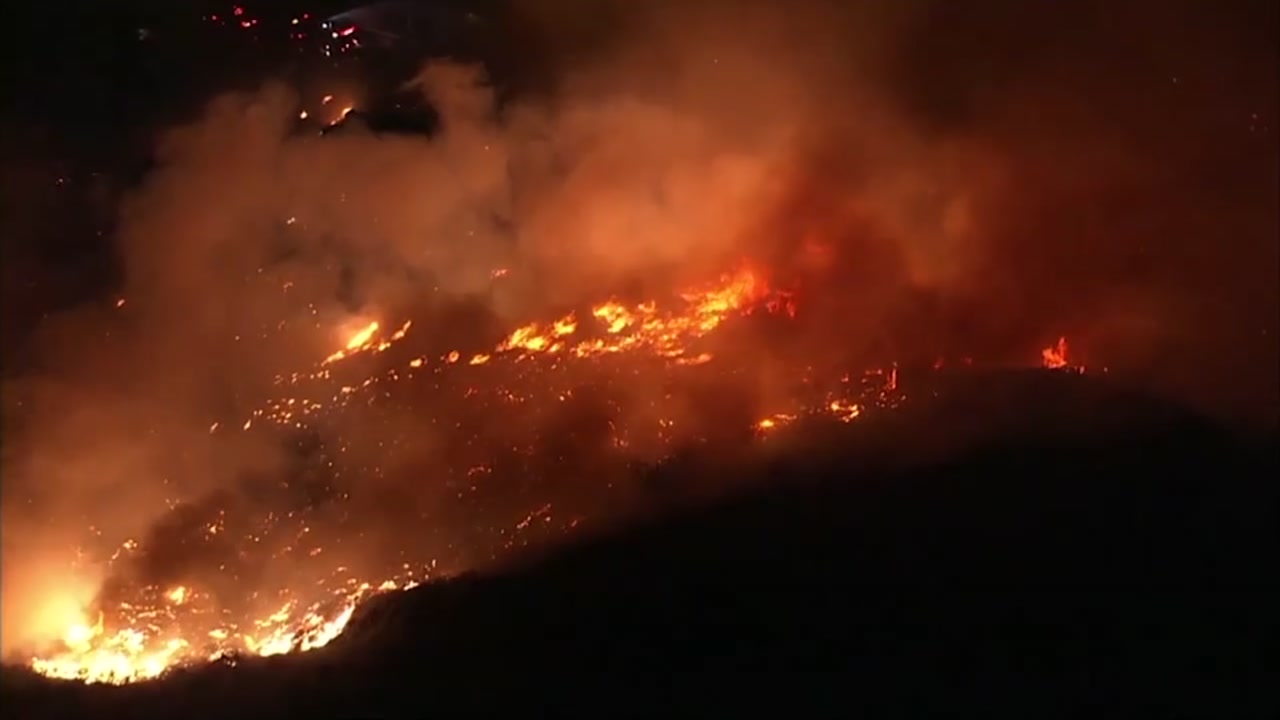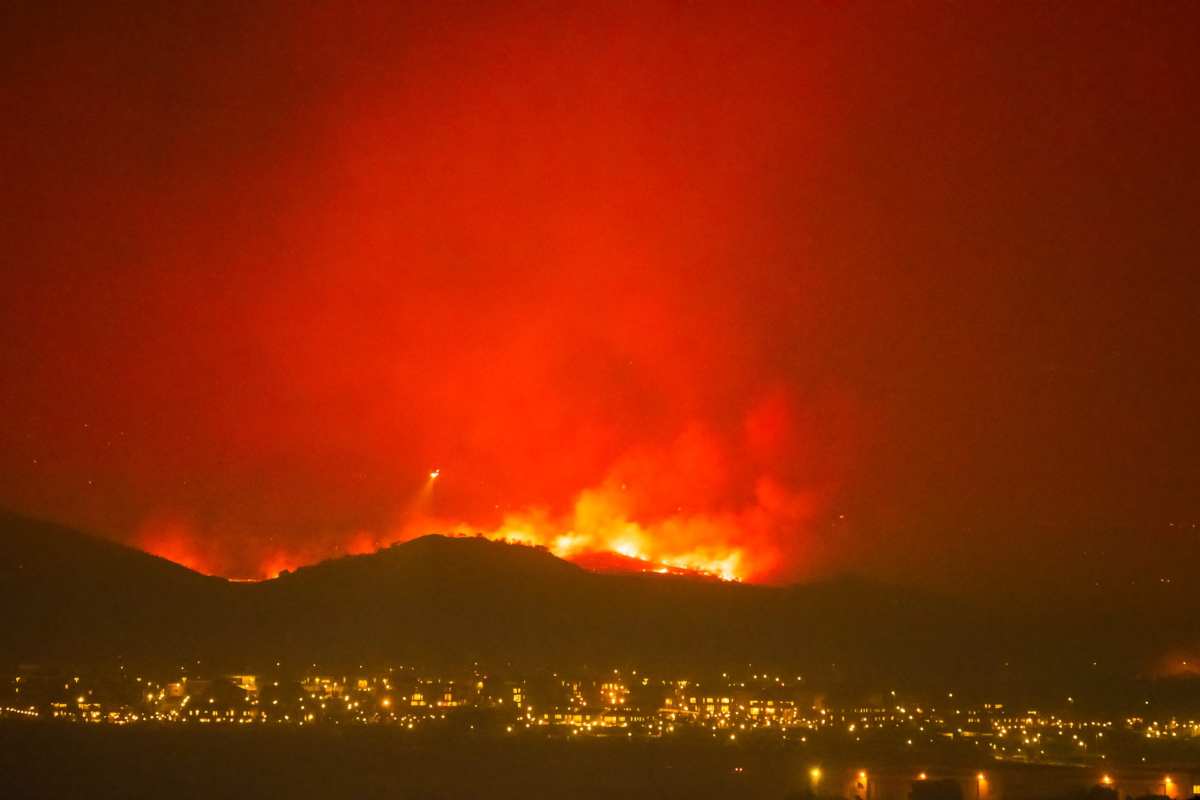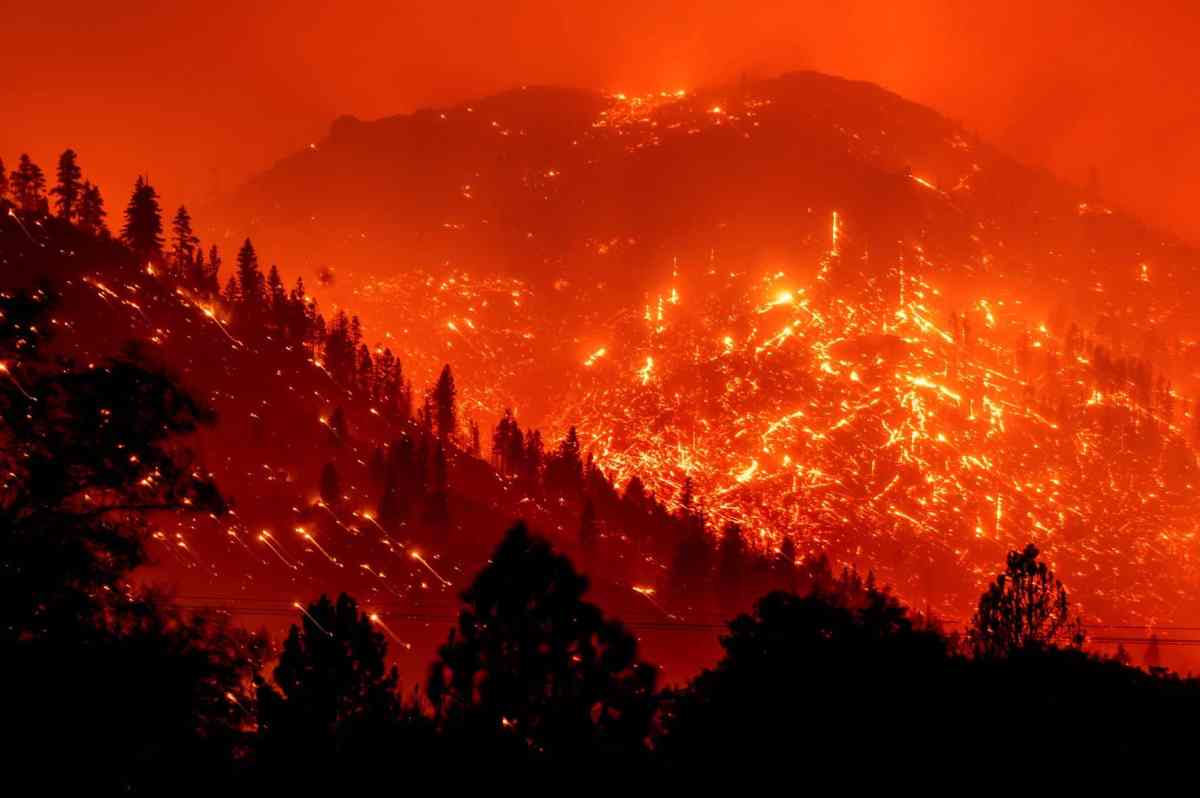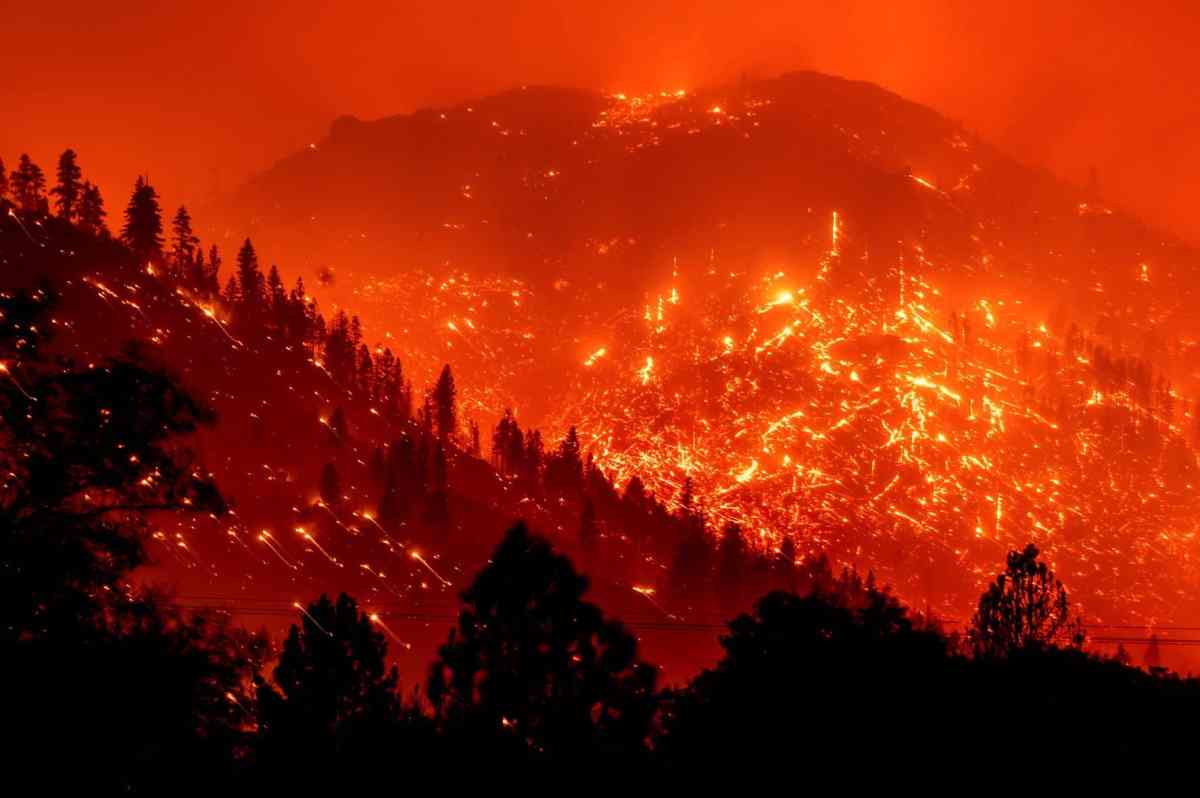Climate change: What role is it playing in the California fires? The answer is complex, involving a deadly mix of rising temperatures, prolonged droughts, shifting wind patterns, and human activity. This isn’t just about bigger fires; it’s about a fundamentally altered wildfire landscape, one where fire seasons are longer, blazes are more intense, and the threat to communities is significantly increased.
We’ll explore how climate change is supercharging these devastating events and what we can do about it.
From the increased flammability of vegetation due to drought to the amplified wind speeds driving rapid fire spread, climate change acts as a powerful accelerant. We’ll examine specific climate models predicting future fire risks and discuss the crucial interplay between climate change and human actions like land management and development. Understanding this complex interaction is key to developing effective mitigation and adaptation strategies.
The Impact of Climate Change on California’s Wildfires
California’s wildfire season has become increasingly severe, fueled by a complex interplay of factors, with climate change playing a significant role. Rising temperatures, prolonged droughts, and altered precipitation patterns are all contributing to more frequent and intense wildfires.
Rising Temperatures and Wildfire Risk, Climate change: What role is it playing in the California fires

Higher temperatures dry out vegetation, creating ideal conditions for wildfires to ignite and spread rapidly. Even a small increase in temperature can significantly increase the risk, as demonstrated by the increased number of days with extreme fire weather conditions in recent years. This effect is particularly pronounced in already dry areas of California.
Drought Conditions and Fuel Buildup
Climate change exacerbates drought conditions, leading to prolonged periods of dry vegetation. This dry vegetation acts as readily available fuel, creating a massive fire load that intensifies wildfires. The lack of moisture also inhibits the natural regeneration of forests, making them more vulnerable.
California’s wildfires are getting worse, fueled by climate change’s impact on drought and extreme heat. It’s a serious issue, and even everyday life is affected; for instance, you might find that mail service is suspended, and trading floors are silent, in honor of a somber occasion, highlighting the scale of the problem. Understanding the link between climate change and these devastating fires is crucial for preparing for the future.
Changes in Precipitation Patterns

Changes in precipitation patterns, including more intense rainfall followed by extended dry periods, create a volatile environment. While intense rainfall might initially seem beneficial, it can lead to rapid vegetation growth followed by equally rapid drying, creating a substantial fuel source for wildfires. The timing and distribution of rainfall are key factors influencing wildfire risk.
Frequency and Intensity of California Wildfires
Over the past few decades, a clear trend of increased frequency and intensity of California wildfires is observable. The size of wildfires and the number of acres burned have significantly increased, demonstrating the impact of climate change on the state’s fire landscape.
Wildfire Statistics Comparison
| Decade | Acres Burned (millions) | Number of Fires (thousands) | Average Fire Size (acres) |
|---|---|---|---|
| 1970-1979 | 0.5 | 5 | 10000 |
| 1980-1989 | 0.7 | 6 | 11667 |
| 1990-1999 | 1.0 | 7 | 14286 |
| 2000-2009 | 1.5 | 8 | 18750 |
| 2010-2019 | 2.5 | 9 | 27778 |
Note: These are illustrative figures and may not reflect precise historical data. Accurate data requires consultation of official wildfire statistics from agencies like Cal Fire.
Specific Climate Change Factors Influencing Wildfires
Beyond the broad impacts of temperature and precipitation, specific climate change-related factors directly influence wildfire behavior and risk.
Increased Wind Speeds and Wildfire Behavior
Climate change models suggest an increase in wind speeds in certain regions of California. Stronger winds accelerate the spread of wildfires, making them more difficult to contain and increasing their destructive potential. The Santa Ana winds, already known for their role in fueling wildfires, are projected to become stronger and more frequent.
Climate Change and Vegetation
Climate change alters vegetation types and densities, influencing the amount of flammable material available for wildfires. Some species may thrive in warmer, drier conditions, while others may decline, leading to changes in fuel loads and wildfire behavior. This shift in vegetation can also create conditions that are more conducive to fire spread.
Climate Models and Future Wildfire Risks
Various climate models predict a significant increase in wildfire risk in California under different emission scenarios. These models project increases in the frequency, intensity, and duration of wildfires, highlighting the urgent need for mitigation and adaptation strategies. For instance, models from the California Air Resources Board and the US Forest Service provide detailed projections.
Changing Fire Season Length
The length of California’s fire season has demonstrably expanded in recent decades, directly linked to climate change. Warmer temperatures and drier conditions extend the period when wildfires are most likely to occur and spread, increasing the overall risk throughout the year. This extended season challenges firefighting resources and preparedness.
Vegetation Susceptible to Wildfires
- Chaparral
- Grasslands
- Pine forests (particularly those with dense undergrowth)
- Eucalyptus forests
- Scrublands
The Role of Human Activities in Exacerbating Wildfire Risk
Human activities significantly interact with climate change to increase wildfire risk in California. Understanding this interaction is crucial for developing effective prevention and mitigation strategies.
Land Management Practices and Wildfire Risk
Human land management practices, such as forest thinning and controlled burns, can either mitigate or exacerbate wildfire risk. Poorly managed forests with excessive fuel buildup increase wildfire intensity. Conversely, proactive forest management can significantly reduce the risk. The effectiveness of these practices depends heavily on their implementation and scale.
Human-Caused Ignitions
A significant portion of California wildfires are human-caused, through accidental or intentional ignitions. These ignitions can be from power lines, discarded cigarettes, campfires, or other sources, creating a constant threat, especially during periods of high fire danger.
California’s wildfires are getting worse, fueled by climate change’s impact on drought and extreme heat. It’s a serious issue, but hey, did you hear about Elvis’ 90th birthday? Check out this cool exhibit celebrating the King: New Exhibit Celebrates Elvis’ 90th Birthday. Anyway, back to the fires – understanding the link between climate change and these devastating events is crucial for future prevention and mitigation efforts.
Urban Sprawl and Wildland-Urban Interface
Urban sprawl increases the wildland-urban interface (WUI), where human settlements and wildlands meet. This proximity increases the risk of wildfires impacting homes and communities, leading to significant property damage and loss of life. Effective land-use planning is crucial in mitigating this risk.
Wildfire Prevention Strategies
Various wildfire prevention strategies exist, ranging from improved forest management and controlled burns to community education and evacuation planning. The effectiveness of these strategies varies depending on their implementation, scale, and coordination. A comprehensive approach that addresses multiple factors is most effective.
Interplay of Human Activity, Climate Change, and Wildfire Risk
Imagine a Venn diagram. One circle represents climate change effects (drought, high temperatures). Another circle represents human actions (poor land management, human-caused ignitions). The overlapping area, where the circles intersect, represents the significantly heightened wildfire risk. The size of each circle, and thus the size of the overlapping area, reflects the magnitude of their respective contributions.
Consequences of Climate Change-Related Wildfires

The consequences of climate change-driven wildfires in California are far-reaching and devastating, impacting the economy, public health, environment, and society.
Economic Impacts
Wildfires cause billions of dollars in economic damage annually, including property loss, infrastructure damage, firefighting costs, and economic disruption. The costs are amplified by the increasing frequency and intensity of wildfires.
Health Consequences
Wildfire smoke poses significant health risks, leading to respiratory illnesses, cardiovascular problems, and other health issues. The prolonged exposure to smoke can have long-term health consequences for vulnerable populations, particularly children and the elderly.
Ecological Impacts
Wildfires significantly impact California’s biodiversity and ecosystems. They destroy habitats, alter plant communities, and affect animal populations. The frequency and intensity of wildfires can overwhelm the capacity of ecosystems to recover, leading to long-term ecological damage.
Social and Psychological Effects

Frequent and intense wildfires cause significant social and psychological distress. Communities experience displacement, trauma, and loss of property and loved ones. The constant threat of wildfires creates anxiety and stress, impacting mental health and community resilience.
Long-Term Effects of Climate Change-Induced Wildfires
The long-term effects of climate change-induced wildfires on California’s environment and society are profound and potentially irreversible. The cumulative impact of frequent, large-scale wildfires will continue to reshape the state’s landscape, economy, and social fabric, demanding significant adaptation and mitigation efforts.
Mitigation and Adaptation Strategies
Addressing the escalating wildfire crisis in California requires a multifaceted approach that combines mitigation and adaptation strategies.
Reducing Greenhouse Gas Emissions
Reducing greenhouse gas emissions is crucial to mitigate climate change and reduce the long-term risk of wildfires. Transitioning to renewable energy sources, improving energy efficiency, and adopting sustainable transportation are key strategies.
Improving Forest Management
Improved forest management practices, such as controlled burns, forest thinning, and reforestation, can significantly reduce wildfire fuel loads and create more resilient forests. These practices must be implemented strategically and on a large scale.
Community-Based Wildfire Preparedness
Community-based wildfire preparedness and response strategies, including evacuation planning, community fire protection programs, and public education, are essential for protecting lives and property. These strategies empower communities to be better prepared for and respond to wildfires.
Technological Solutions for Wildfire Detection and Suppression
Technological solutions, such as improved early warning systems, remote sensing technologies, and advanced firefighting equipment, enhance wildfire detection and suppression capabilities. These technologies improve response times and increase the effectiveness of firefighting efforts.
Improved Building Codes and Land-Use Planning
Improved building codes and land-use planning can minimize wildfire damage by promoting fire-resistant construction materials and practices, and by limiting development in high-risk areas. These strategies reduce the vulnerability of communities to wildfires.
Conclusive Thoughts: Climate Change: What Role Is It Playing In The California Fires
California’s wildfires are no longer just a seasonal concern; they’re a stark illustration of climate change’s devastating power. The escalating frequency, intensity, and destructive reach of these fires demand urgent action. By understanding the complex interplay between climate change, human activity, and wildfire behavior, we can begin to implement effective mitigation and adaptation strategies. This includes reducing greenhouse gas emissions, improving forest management, and enhancing community preparedness.
Okay, so we’re talking about how climate change is supercharging California wildfires, making them bigger and more frequent. It’s a serious issue, and sometimes it feels like unrelated news just adds to the chaos – like that crazy story about a car being blown up near Regent Street; check out the details here: Car blown up in bomb scare near Regent Street ‘had its phone.
But back to the fires – the connection is that extreme weather events, fueled by climate change, create perfect conditions for these devastating blazes.
The future of California’s landscape and its inhabitants depends on our collective response to this escalating threat.
FAQ Section
What specific types of vegetation are most at risk due to climate change?
Species like chaparral, which thrives in dry conditions and is highly flammable, are particularly vulnerable. Increased drought stress makes these plants even more susceptible to ignition and rapid burning.
How does climate change affect the length of California’s fire season?
Warmer temperatures and drier conditions are extending the fire season significantly, creating a longer period of high risk.
What are some examples of community-based wildfire preparedness strategies?
These include creating defensible spaces around homes, community-wide evacuation plans, and public education programs on fire safety.
What role do insurance companies play in addressing wildfire risk?
Insurance companies are increasingly assessing wildfire risk in determining premiums and coverage, leading to higher costs in high-risk areas and sometimes making insurance unavailable.
